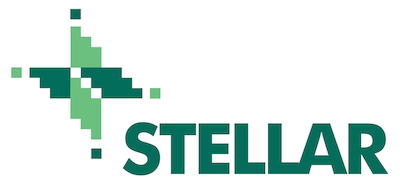Institute of Astronomy and National Astronomical Observatory, BAS
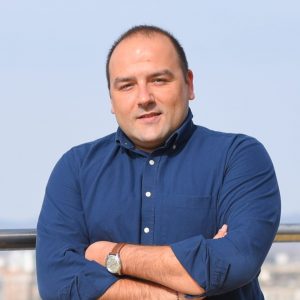
Dr. Kamen Kozarev is Associate Professor and member of the Solar Physics group at the IANAO, where he has been since late 2016. Before that he was a postdoctoral researcher at the Harvard-Smithsonian Center for Astrophysics, having won the prestigious NASA LWS Jack Eddy Space Weather Postdoctoral Fellowship in 2012. He received his PhD from Boston University in 2013. Dr. Kozarev’s expertise combines observational characterization of solar large-scale coronal shocks and numerical modeling of solar energetic particle acceleration and heliospheric transport.
Dr. Antoaneta Antonova is Associate Professor and works at the IANAO since Jan 2019. She is currently the President of the Bulgarian Astronomical Society. Before that she was an Assoc. Prof. at the Department of Astronomy at the Sofia University where she has authored and led many BS and MS courses including Basics of radio astronomy. She received her PhD from Queen’s University Belfast in 2008. Her expertise is in the field of magnetic activity of cool stars and brown dwarfs and its diagnostics in the optical and radio domains.
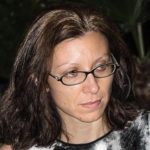
Dr. Rositsa Miteva is Associate Professor in BAS since 2018. In 2007 she received a PhD degree in astrophysics from the University of Potsdam, Germany, as a DAAD scholarship fellow. She spent 3 years as a postdoctoral researcher in the Astrophysical Institute Potsdam, Germany, and a postdoctoral position in space weather in Paris Observatory. Dr. Miteva has taught classes in solar physics and radio astronomy to master students from University of Sofia. Her expertise is in the observational study of solar energetic particles and space weather.
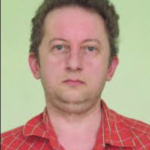
Dr. Momchil Dechev is an Assistant Professor and a member of the Solar Physics group at the IANAO. In 2005 he received a PhD in solar physics from the IANAO, Bulgarian Academy of Sciences. His expertise is in the field of quiescent and eruptive prominences, solar flares and grid computations and technologies. He has lead two international scientific projects with France (2001) and Serbia (2018).

Dr. Peijin Zhang is a postdoctoral researcher in IANAO from 2021 to 2022. He obtained his Ph.D. degree from the University of Science and Technology of China in 2021-June. His research interest is in the observation and theoretical analysis of solar radio emission. He is a member of LOFAR Solar and Spaceweather Key Science Project (SSW-KSP), working on the data processing of LOFAR solar observations. He is the major maintainer for the code repository of ‘lofarSun’.
ASTRON, The Netherlands Institute of Radio Astronomy
Dr. Rene Vermeulen obtained his PhD in astronomy at Leiden University in 1989, on multi-frequency studies of the famous microquasar SS433. Two series of European VLBI Network observations, still unrivalled in quality, were at the core of his PhD thesis. Vermeulen then spent 7 years working as a Research Fellow and then a Senior Research Fellow at the world-renowned California Institute of Technology (Caltech), mainly on VLBI studies of ultra-relativistic radio sources. Vermeulen moved to ASTRON in 1996, where he now has more than twenty years of experience.
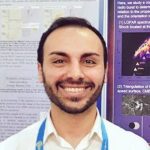
Dr. Pietro Zucca is a Solar Physicist and Telescope Scientist at the Netherlands Institute for Radio Astronomy (ASTRON). He is currently studying the radio emission from the solar corona using LOFAR. He previously worked at Observatoire de Paris, under the HESPERIA project to study the diagnostics of solar particle acceleration and propagation. In the previous years, he has been a key member of the team responsible for setting up instruments to monitor radio spectra of solar bursts from the Rosse Solar-Terrestrial Observatory in Ireland, and has given numerous presentations at international conferences and published papers in leading scientific journals.
Mr. Ronald de Wild is an engineer working in the research and development department of ASTRON. His main expertise is in the area of telecommunication systems specification and implementation. His skills include, transmission concepts such as (de)modulation, noise quantisation, and switching concepts like routing, queuing. Mr. de Wild is also an expert of signal processing algorithms and architectures, such as data path (Fourier), control path design and test methodologies.
Dr. Marco Iacobelli is an astronomer and LOFAR telescope scientist at the Radio observatory department at ASTRON. Iacobelli obtained his PhD at Leiden university in 2014 focussing on Galactic magnetism. Among his research interests are space science, cosmic magnetism and high energy astrophysics. Currently Iacobelli is the co-chair of the Milky Way working group and a member of the council of the LOFAR Magnetism key science project (KSP).
Dr. Emanuela Orrú is an extragalactic radio astronomer and Telescope Scientist at the Netherlands Institute for Radio Astronomy (ASTRON). Obtained her PhD at the Universita’ degli studi di Cagliari in 2007, defending a thesis on interferometry at low frequency. Her scientific interest covers studies of radio galaxies and clusters of galaxies at low frequencies. She joined the LOFAR collaboration in 2008 contributing to the commissioning of the instrument. She became LOFAR Telescope Scientist at ASTRON in 2012, since then she has been involved in scientific operations.
Dr. Maaijke Mevius is a researcher at the R&D department of ASTRON. She has been involved in LOFAR data calibration with a focus on ionospheric calibration since 2006. One of her research interests is Space Weather applications with LOFAR, investigating real-time monitoring of solar radio bursts and ionospheric distortions. She is the project scientist of the H2020 project LOFAR for Space Weather (LOFAR4SW) and of the ESA project, “Utilisation of LOFAR in SSA SWE Services”, studying possible LOFAR data products for the ESA Space Weather portal.
Dr. David Prinsloo is a researcher with the Radio Group at the R&D department of The Netherlands Institute for Radio Astronomy. His primary research interest is on antenna designs for both phased array and reflector-based radio telescopes. In addition to the design and electromagnetic modelling of antennas for various radio telescope projects, he regularly gives lectures on antennas to students with various backgrounds. He also holds a guest researcher position with Eindhoven University of Technology where he acts as co-supervisor to post-graduate students within the Centre for Wireless Technology at the department of Electrical Engineering.
Mr. Juergen Morawietz earned his ‘Diplom Ingenieur’ degree at the University of Applied Science Osnabrueck (Germany). Since 1997 he is working at the R&D department of ASTRON and was involved in almost all major projects at ASTRON like the upgrade of the Westerbork Telescope, LOFAR, APERTIF, NCLE.His expertise is the design, simulation and realization of low noise RF building blocks, subsystems and instruments, the test and verification of RF systems, the implementation of cryogenic low noise systems and the maintenance and technical support of the RF chain of the Westerbork Telescope.
Dublin Institute for Advanced Studies
Prof. Peter T. Gallagher is Head of DIAS Astrophysics and an Adjunct Professor at Trinity College Dublin. He is the PI for the Irish LOFAR radio telescope. His team currently includes 6 PhD students and 3 Postdoctoral Research Fellows in areas such as CMEs, space weather and solar radio astronomy. Professor Gallagher spent six years in the US, firstly as a Postdoctoral Research Fellow at Big Bear Solar Observatory and Owens Valley Solar Array in California and then as a Scientist and Senior Scientist at NASA Goddard Space Flight Center. He has served on many review panels and notably is currently a member of ESA’s Space Science Advisory Committee.

Dr Eoin Carley is a Schrödinger Advanced Fellow at DIAS. He received his PhD in physics at TCD in 2014 before being awarded an ELEVATE Marie Curie-Sklodowska fellowship to undertake 2 years of research at the Paris Observatory, with the final year back in TCD. He is a founding member of the Rosse Solar Terrestrial Observatory and a senior research scientist on the ILOFAR. His expertise lies in using radio observations as a diagnostic of the sites of electron acceleration in the solar corona, particularly from particle acceleration events during flares or coronal mass ejection-driven shocks. He is currently the lead scientist at DIAS and TCD on the H2020 LOFAR for Space Weather (LOFAR4SW) project.
Dr Sophie Murray is a Research Fellow at DIAS. She received her PhD in solar physics at TCD before working as a Space Weather Research Scientist at the UK Met Office. Her research experience ranges from solar flares and active regions, to solar wind propagation through the heliosphere, to the impact of space weather on the Earth’s upper atmosphere. Dr. Murray leads several international forecast benchmarking activities, such as the NASA Flare Scoreboard and the solar eruption cluster of the COSPAR International Space Weather Action Team.
Dr Shane Maloney is Senior Research Fellow at DIAS. He received his PhD from Trinity College Dublin in 2012 focusing the propagation of Coronal Mass Ejections (CMEs) in the heliosphere. After completing his PhD he spent a number of years in the software development industry. He returned to academia in 2016 to work on STIX, an X-ray imaging spectrometer on Solar Orbiter (launched in Feb 2020). He is a STIX Co-I with responsibilities in software and analysis. He also works on a number of solar and space weather projects using traditional and modern machine learning approaches.
Technical University of Sofia
Prof. Ilia G. Iliev is a Dean of Faculty of Telecommunications at the Technical University of Sofia. Under his supervision over 60 researchers and lecturers are employed. Prof Iliev is a lead scientist with industrial and academic experience with successful accomplishment of 13 projects scientific and 5 industry projects in the field of electromagnetic detection, cellular network optimization and intercellular interference control. Professor Iliev is with the Technical University of Sofia for more than 30 years.
Assoc. Prof. Peter Z. Petkov is Head of Antenna and Microwave laboratory at the Technical University of Sofia. He has comprehensive experience in Satellite and Aerospace industry including CPI Antenna System Division (Andrew Satcom) and MAXAR (Space System Loral), USA. Prof. Petkov is a several patents holder, has supervised 3 PhD students and co-authored over 50 papers in leading journals in its field, many as senior author. His expertise is in the field of Antennas and Antenna arrays, RF technology and Satellite communications. Several of his designs are in industrial use, some of them are space qualified and in service in orbit.
Assoc. Prof. Agata Manolova (Female) is with the Faculty of Telecommunications at the Technical University of Sofia (TU-Sofia), Bulgaria. She finished her PhD conjointly between the TU-Sofia and the Joseph Fourier University, Grenoble, France. Her domains of interest are Pattern Recognition, Computer Vision, Image and Video processing, Machine learning, Biometrics, Augmented, Mixed and Virtual reality, Content based image retrieval etc.

The STELLAR project has received funding from the European Union’s Horizon 2020 research and innovation programme under grant agreement No 952439. It is coordinated by the Institute of Astronomy, Bulgarian Academy of Sciences.
